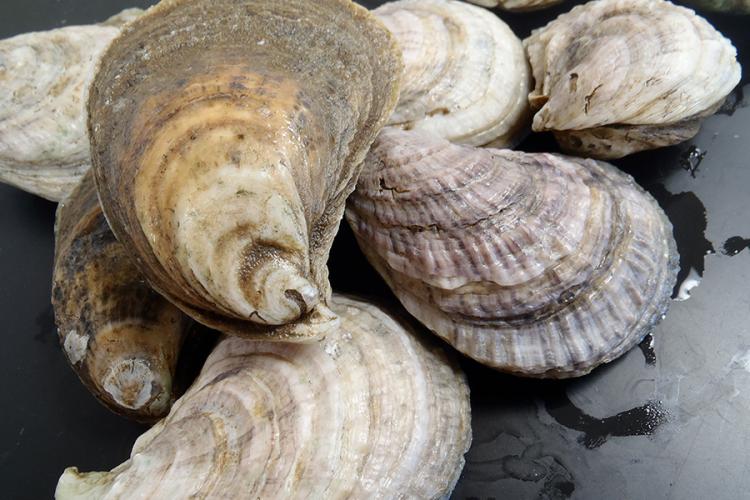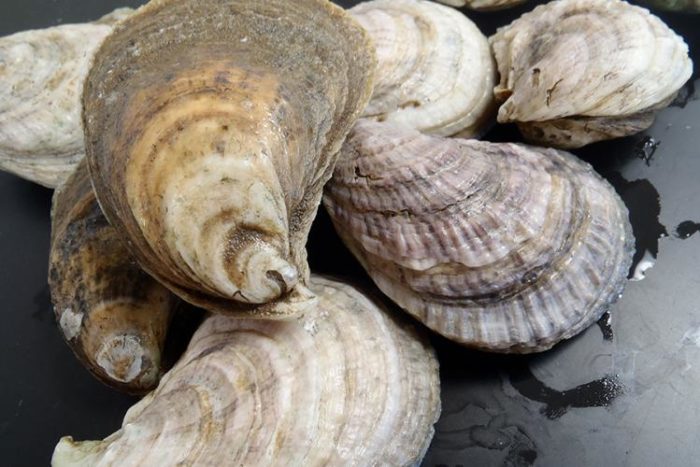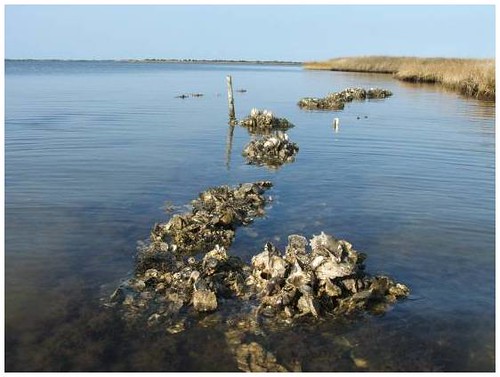
Sea Wonder: Eastern Oyster

Photo credit: NOAA Fisheries
DESCRIPTION
The Eastern oyster, like its relatives the clam and mussel, is a bivalve mollusk – meaning it has two shells that hinge together. The top shell is flat, while the bottom shell forms a scooped shape. The outside of the shell is a gray or tan oval-shape with a rough texture, and the inside is smooth and white with a purple spot. The inside cavity, where the soft-bodied animal lives, is filled with water, which allows the animal to survive for long periods of time without needing to open its shell.
Oysters are known as ecosystem engineers, for the critical role they play as a keystone species in the ecosystem. The oyster reefs provide habitat for other species to live and improve water quality. Oysters are a key part not only of the ecosystem, but also of the historical and cultural heritage of many regions. In the Chesapeake Bay, the oyster industry contributes millions of dollars to the region’s economy, as an important commercial species.
HABITAT & LIFE HISTORY
The Eastern oyster can be found in brackish and saltwater, from the Gulf of St. Lawrence to the Gulf of Mexico. Oyster spawning occurs when the water begins to warm in the early summer. Adults release eggs and sperm into the water, in a process known as broadcast spawning. Over the next day, they develop into free-swimming larvae, looking for the perfect place to live. Oysters prefer to set on the shells of other oysters, however they will also use other available, hard surfaces. When they have selected the perfect spot, they secrete a cement-like substance to attach themselves. As they grow, the settled larvae (known as spat) settle on top of adults, forming layers of oysters that grow upwards and outwards.
Oysters are filter-feeders, which means they feed on small plankton in the water by opening their shells and pumping water through their gills, which traps small particles of food, as well as nutrients, sediment, and pollutants. An adult oyster can filter up to fifty gallons of water in one day!
THREATS & CONSERVATION
The Eastern oyster was once abundant, however their populations have declined due to historic over-harvesting, disease, and habitat loss from coastal development and changes in land use, leading to nutrient and sediment runoff. Experts are working to support the recovery of the Eastern oyster through the careful management of oyster harvests and the restoration of oyster reefs. In some areas, oyster sanctuaries have been created with recycled oyster shells or materials to encourage new spat to settle.

Photo credit: United States Fish & Wildlife Service
